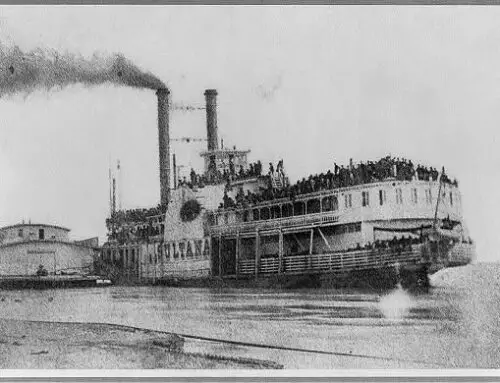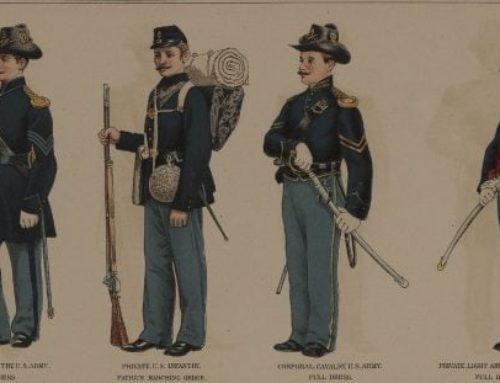(1818-1895)
Frederick Douglass was born as Frederick Augustus Washington Bailey around 1818 although his actual birth date is unknown. He was born into slavery on the eastern shore of Maryland.
When he was eight he was moved to Baltimore and given to a slave master named Hugh Auld.
He was taught to read by the wife of Hugh Auld and other people at a young age. After several years living in Baltimore with the Aulds he was sent back to rural Maryland to work as a field hand.
It was at this point that he learned first hand the cruelty of slavery. He was given to a tough slave breaking man named Edward Covey.
Covey was a cruel man and treated Douglass very poorly with beatings and whippings. It was during this time that Frederick Douglass decided he had no choice but to gain his freedom.
Frederick Douglass Escapes Slavery
Frederick Douglass attempted to escape twice although he failed both times.
When he was around twenty years old he tried again. On September 3rd 1838 a friend provided him with a sailor’s uniform and identification papers. These were legitimate items from a free African American sailor.
After receiving the uniform and identity papers he took a train and also a steamship and was able to safely arrive in New York City without being found out.
After arriving in New York City he became a free man. Within a couple of weeks he had changed his name from Frederick Augustus Washington Bailey to Frederick Douglass in order to protect himself from his former master who could come looking for him. He moved to New Bedford Massachusetts, was married and then wasted no time becoming heavily involved in the abolitionist movement.
Frederick Douglass Meets William Lloyd Garrison
Soon after his arrival in the north Douglass began attending abolitionist meetings. He wasn’t simply going to these meetings but he was actively participating in them as well.
It was at one of these meetings in Massachusetts that Douglass met a very committed abolitionist named William Lloyd Garrison who was very eager for Douglass to join his group the Massachusetts Anti-Slavery Society.
Douglass accepted the invitation and went on many speaking tours throughout the north where he was often very well received.
He made such an impression on northern audiences that they could not believe that he was a former slave. In order to prove he indeed was who he claimed to be he began to write his story.
Frederick Douglass the Author
In 1845 he wrote his first autobiography titled The Narrative of the Life of Frederick Douglass. In his book he describes in great detail who he was, where he was born and raised and who his slave masters were. He made it very clear to even the greatest doubter of his story that he was absolutely telling the truth as to his slave origins.
Unfortunately this was a very dangerous thing for him to do. While the book was a bestseller and made him more popular than ever, it also was like sticking a big target on his back. Since he was an escaped slave he was still technically the property of his owner.
His owner could claim him and have him returned to slavery, and there would be nothing Douglass could do about it. Douglass therefore decided he would be better off leaving the United States.
Frederick Douglass Goes Abroad
In 1845 he set sail for Ireland and Britain, where he would spend the next two years of his life.
He continued his abolitionist work there giving many speeches railing against the horrors of slavery.
He became so popular that his British supporters gathered together enough money and purchased his freedom.
This freedom which was lawfully purchased would allow him to return to the United States without fear of being sent back into slavery.
In 1847 he returned to New York and started a newspaper called The North Star.
During his lifetime he wrote three books about his life #ad Frederick Douglass : Autobiographies : Narrative of the Life of Frederick Douglass, an American Slave / My Bondage and My Freedom / Life and Times of Frederick Douglass (Library of America)
Frederick Douglass Civil War
Douglass knew that in order to abolish slavery a great change must occur. It would take more than speeches to make this change.
The first person to actually attempt an overthrow of the entire institution of slavery was the fanatical abolitionist John Brown. In 1859 he led a failed attempt to seize the weapons stored at Harpers Ferry Virginia and recruit slaves from nearby plantations to rise up and start a guerrilla war against the government.
While this plan failed it did bolster the northern abolitionists who saw John Brown as a hero for their cause. Even his sacrifice however, would not be enough to change the laws.
It wasn’t until 1861 when the Civil War broke out that the opportunity to end slavery was in sight.
Douglass played a critical role in the formation of Civil War black soldiers. He convinced President Abraham Lincoln that blacks should be allowed to fight for their freedom, and fight in defense of their country.
On January 1st 1863 the Emancipation Proclamation was enacted. This freed all slaves held in the Confederacy.
The Union also began to form African American regiments to fight for the Union. Frederick Douglass played a vital role in supporting and recruiting for these units.
Two of his sons joined the most famous black regiment, the 54th Massachusetts regiment led by Colonel Robert Gould Shaw.
One of his sons even fought at the Battle of Fort Wagner in 1863.
Post Civil War
After the war Douglass moved to Washington D.C. where he continued his fight for civil rights for African Americans and women. Women were still not allowed to vote and he wanted to change that.
He also held several governmental posts such as the United States minister to Haiti and Charge d’Affairs to the Dominican Republic, US Marshall for Washington D.C., and he was the recorder of deeds for the District of Columbia.
Frederick Douglass died of natural causes on February 20th 1895.

































